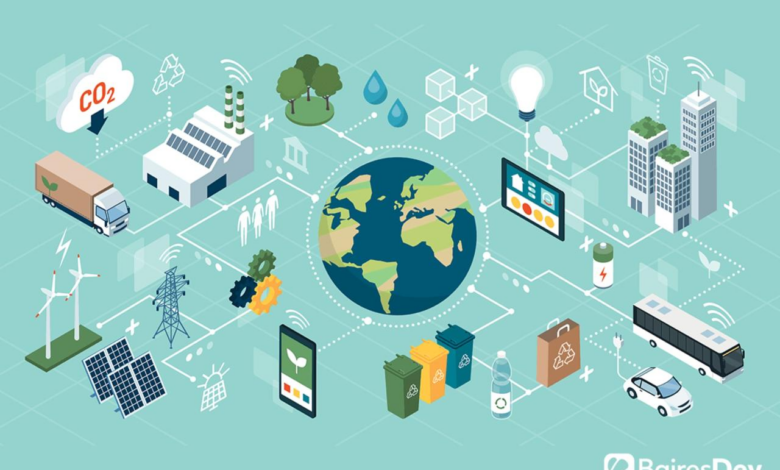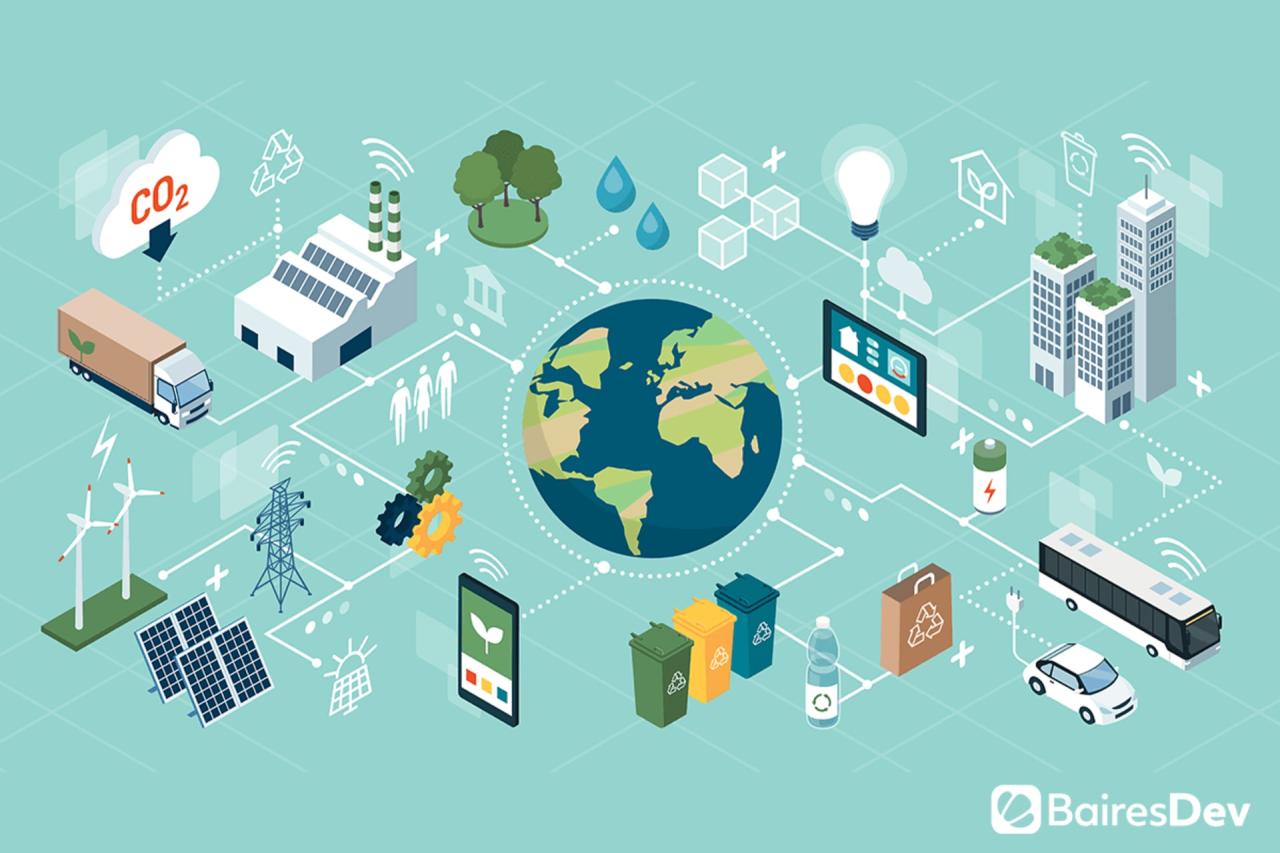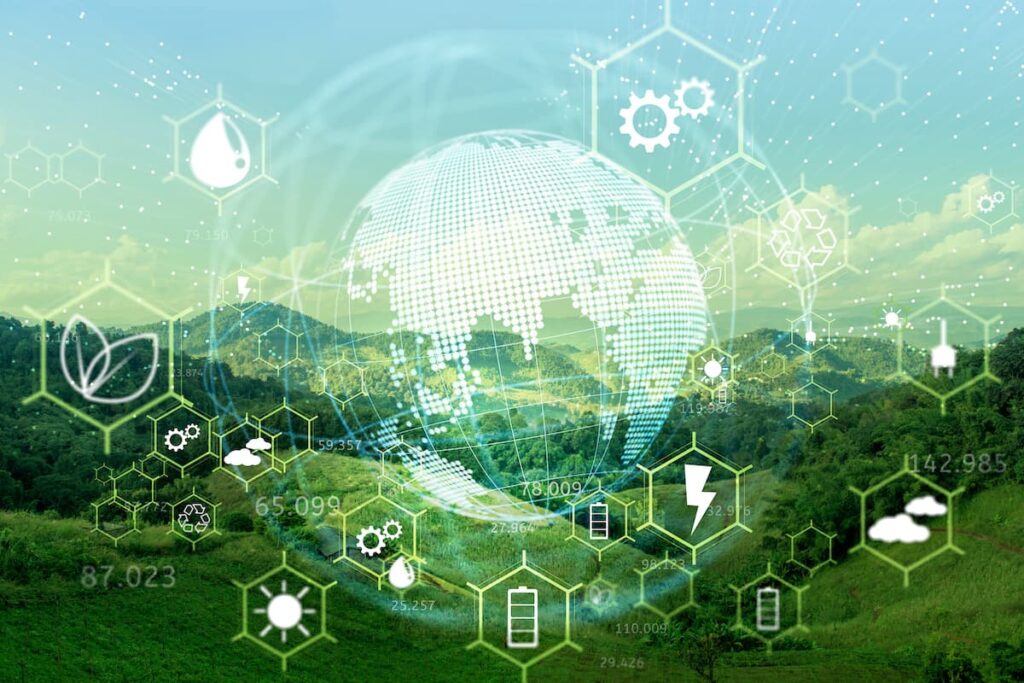Green Innovation Drives Economic Prosperity


A profound transformation is reshaping the global economic landscape, one where sustainability and profitability are no longer competing ideals but complementary forces. The outdated notion that environmental protection hinders economic growth is being systematically dismantled by a powerful new reality: green innovation is a primary driver of economic prosperity. This paradigm shift is not about mere compliance or corporate social responsibility; it is about harnessing technological advancement, resource efficiency, and systemic redesign to unlock unprecedented opportunities for wealth creation, job generation, and competitive advantage. This in-depth analysis explores how the green revolution is powering the economy, moving beyond theoretical benefits to showcase tangible impacts across industries, investment portfolios, and global markets.
A. The New Economic Engine: Deconstructing the Green Growth Model
The traditional economic model, largely linear and extractive, is hitting its limits, constrained by resource depletion, pollution, and volatile supply chains. The green growth model offers a dynamic, resilient, and circular alternative, powered by a suite of interconnected innovations.
A. Redefining Productivity and Efficiency: At its core, green innovation enhances economic productivity by doing more with less. This is achieved through:
-
Resource Productivity: Advanced technologies enable businesses to drastically reduce their input of raw materials, water, and energy per unit of output. For example, precision agriculture uses IoT sensors and data analytics to deliver water and fertilizers only where and when needed, boosting crop yields while slashing resource use and costs.
-
Energy Efficiency: Innovations in building materials (like smart windows and advanced insulation), industrial processes, and transportation (electric vehicles) significantly lower energy consumption. This reduces operational expenses for businesses and households, freeing up capital for other economic activities and insulating economies from fossil fuel price shocks.
-
Waste-to-Wealth Models: The circular economy, a hallmark of green innovation, views waste as a design flaw and a resource opportunity. By redesigning products for disassembly, reuse, and recycling, companies create new revenue streams from materials that were previously considered trash, turning a cost center (waste management) into a profit center.
B. Job Creation in Emerging Sectors: The transition to a green economy is a massive job creation engine. Unlike the automation-heavy fossil fuel industry, renewable energy and sustainability sectors are more labor-intensive across the skill spectrum.
-
Renewable Energy Deployment: The solar and wind industries employ a vast workforce in manufacturing, installation, maintenance, and grid modernization. According to various reports, these sectors are creating jobs at a much faster rate than the overall economy.
-
Energy Efficiency Services: A hidden giant of job creation, this sector includes workers retrofitting buildings, auditing energy use, manufacturing efficient appliances, and designing smart grid software. These roles are inherently local and cannot be outsourced, strengthening community economies.
-
Circular Economy and Recycling: New roles are emerging in reverse logistics, remanufacturing, repair, and advanced recycling technologies, creating a new class of “green-collar” jobs in communities worldwide.
C. Stimulating Innovation and Competitiveness: The demand for green solutions is a powerful catalyst for research and development. Governments and private enterprises are investing billions in cleantech R&D, spurring breakthroughs that create new markets and enhance national competitiveness. Companies that lead in green innovation often become more agile, efficient, and resilient, gaining a significant edge in a world increasingly focused on sustainability.
B. The Financial Surge: Green Markets and Investment
The economic potential of green innovation has captured the attention of the global financial community, leading to a massive reallocation of capital towards sustainable assets.
A. The ESG Investment Revolution: Environmental, Social, and Governance (ESG) criteria have become a mainstream factor in investment decisions. Trillions of dollars are now managed in ESG-focused funds, driven by compelling data:
-
Outperformance and Risk Mitigation: Numerous studies indicate that companies with strong ESG profiles often demonstrate lower volatility, better risk management, and can outperform their peers over the long term. They are less likely to face regulatory fines, reputational damage, and supply chain disruptions linked to environmental disasters.
-
Meeting Investor and Consumer Demand: A new generation of investors and consumers is actively seeking to align their capital and purchases with their values. Companies that ignore this shift risk losing access to capital and market share.
B. The Green Bond Market Explosion: Green bonds are fixed-income instruments specifically designed to raise capital for climate and environmental projects. This market has grown from a niche concept to a multi-trillion-dollar arena, funding everything from renewable energy farms and public transit to clean water infrastructure and energy-efficient buildings. This provides a vital, dedicated channel of capital for the green transition.
C. Venture Capital in Cleantech: After a period of caution following the early 2000s, venture capital and private equity are flooding back into the cleantech sector. This time, the focus is on more mature and scalable technologies, such as:
-
Grid-Scale Energy Storage: Crucial for managing the intermittency of renewables.
-
Green Hydrogen: Produced using renewable energy, it holds promise for decarbonizing heavy industry and long-haul transport.
-
Carbon Capture and Utilization: Technologies that remove CO2 from the atmosphere and repurpose it into products like fuels or building materials.
-
Sustainable Food and Agriculture: Innovations in plant-based proteins, vertical farming, and precision agtech.

C. Sectoral Transformations: Green Innovation in Action
The impact of green innovation is not confined to a single industry; it is permeating and revitalizing every sector of the modern economy.
A. Energy: The Foundation of the Transition: The energy sector is undergoing its most significant transformation since the industrial revolution.
-
Plummeting Renewable Costs: The cost of solar photovoltaic (PV) electricity and wind power has fallen dramatically, making them the cheapest source of new power generation in most parts of the world. This deflationary trend is a massive economic stimulus, reducing energy costs for everyone.
-
Grid Modernization and Smart Grids: The old, centralized grid is evolving into an intelligent, decentralized network. Smart grids integrate renewable sources, manage demand through smart meters, and improve resilience, creating a more efficient and reliable energy system that underpins all other economic activity.
-
Energy Independence and Security: By developing domestic renewable resources, nations can reduce their dependence on imported fossil fuels, improving their trade balance and insulating their economies from geopolitical instability in energy-rich regions.
B. Transportation and Mobility: The way we move people and goods is being reimagined.
-
The Electric Vehicle (EV) Ecosystem: The shift to EVs is not just about cars; it encompasses buses, trucks, and even ships. This is spawning entire new industries in battery manufacturing, charging infrastructure, and software management, while reducing air pollution and its associated public health costs.
-
Sustainable Aviation and Shipping: While challenging, innovation in sustainable aviation fuels (SAFs), hydrogen propulsion, and advanced logistics is underway, aiming to decarbonize the global movement of goods and people.
-
Mobility-as-a-Service (MaaS): Integrated digital platforms that combine public transit, ride-sharing, bike-sharing, and scooter rentals into a single service reduce the need for private car ownership, decreasing congestion, emissions, and transportation costs for individuals.
C. Agriculture and Food Systems: The agri-food sector is ripe for green disruption.
-
Regenerative Agriculture: Farming practices that restore soil health, enhance biodiversity, and improve water retention are gaining traction. These practices not only sequester carbon but also make farms more resilient to climate extremes, securing the food supply chain.
-
Precision Fermentation and Cellular Agriculture: Using biotechnology to create proteins and other food ingredients directly, bypassing traditional animal agriculture. This has the potential to drastically reduce the land, water, and emissions footprint of our food system.
-
Supply Chain Transparency: Blockchain and IoT are being used to create transparent supply chains, allowing consumers to verify the sustainability and ethical credentials of their food, creating market advantages for responsible producers.

D. Policy as a Catalyst: Government’s Role in Green Growth
Government policy plays a decisive role in accelerating the green transition and harnessing its full economic potential.
A. Carbon Pricing and Markets: Putting a price on carbon emissions, either through a direct tax or a cap-and-trade system, creates a powerful economic signal that incentivizes businesses and innovators to develop and adopt low-carbon solutions. It corrects the market failure that has long made pollution artificially cheap.
B. Strategic Investment and R&D Funding: Public investment in foundational R&D, such as for battery chemistry or green hydrogen, can de-risk technologies for the private sector to scale. Furthermore, government procurement policies that prioritize green products can create guaranteed markets, helping new industries achieve economies of scale.
C. Standards and Regulations: Well-designed regulations, such as fuel efficiency standards for vehicles, building energy codes, and mandates for recycled content, create a level playing field and drive innovation by setting clear, long-term targets for industry.
E. Navigating the Challenges and Ensuring an Equitable Transition
The path to a green economy is not without obstacles. A proactive approach is required to manage the transition fairly and effectively.
A. Addressing Stranded Assets and Workforces: As the economy shifts away from fossil fuels, certain assets (like coal-fired power plants) and the communities that depend on them will face economic challenges. A just transition requires targeted policies for retraining workers, investing in economic diversification in affected regions, and providing social safety nets.
B. Securing Critical Minerals: The green transition relies on a new set of raw materials, such as lithium, cobalt, and rare earth elements, for batteries and renewable tech. Ensuring a secure, ethical, and sustainable supply chain for these minerals is a critical geopolitical and economic challenge.
C. Preventing Greenwashing: As the economic incentives for being “green” grow, so does the risk of greenwashing—making misleading environmental claims. Robust, standardized reporting frameworks and independent verification are essential to maintain market integrity and ensure capital flows to genuinely sustainable enterprises.
Conclusion: The Inexorable Rise of the Green Economy
The evidence is overwhelming and the momentum is unstoppable. Green innovation is no longer a peripheral concern but the central narrative of 21st-century economic development. It is powering the economy by fostering resilience, unlocking efficiency, creating millions of jobs, and attracting trillions in investment. Nations and businesses that embrace this transition, viewing it through the lens of opportunity rather than cost, will be the leaders of the next economic era. They will enjoy cleaner air, more secure resources, and a vibrant, innovative economy built to thrive in the challenges of the future. The green wave is here, and it is carrying with it the blueprint for lasting, inclusive prosperity.
Tags: green economy, sustainable innovation, ESG investing, circular economy, renewable energy, green jobs, cleantech, economic growth, sustainability, green technology, climate finance, green transition



